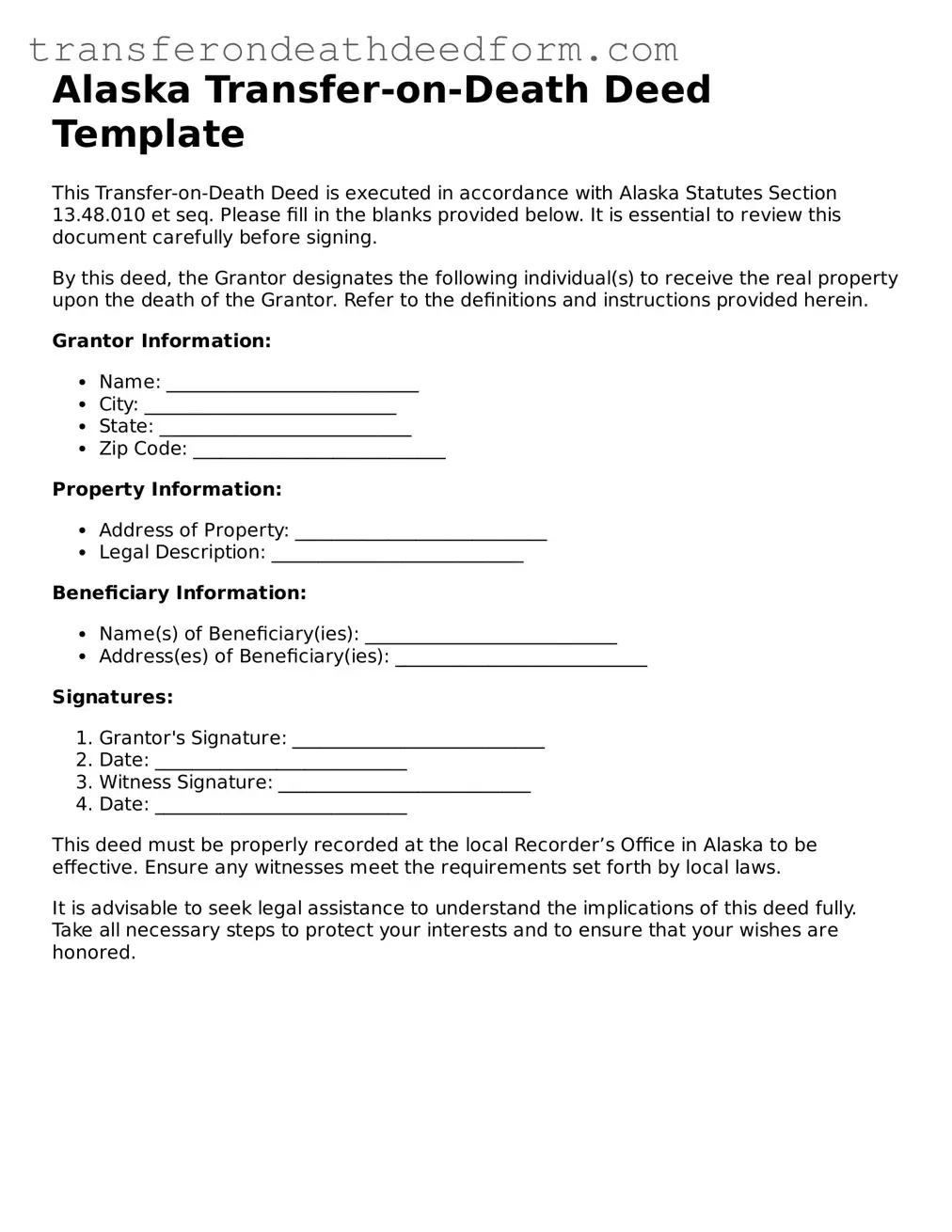Alaska Transfer-on-Death Deed Template
This Transfer-on-Death Deed is executed in accordance with Alaska Statutes Section 13.48.010 et seq. Please fill in the blanks provided below. It is essential to review this document carefully before signing.
By this deed, the Grantor designates the following individual(s) to receive the real property upon the death of the Grantor. Refer to the definitions and instructions provided herein.
Grantor Information:
- Name: ___________________________
- City: ___________________________
- State: ___________________________
- Zip Code: ___________________________
Property Information:
- Address of Property: ___________________________
- Legal Description: ___________________________
Beneficiary Information:
- Name(s) of Beneficiary(ies): ___________________________
- Address(es) of Beneficiary(ies): ___________________________
Signatures:
- Grantor's Signature: ___________________________
- Date: ___________________________
- Witness Signature: ___________________________
- Date: ___________________________
This deed must be properly recorded at the local Recorder’s Office in Alaska to be effective. Ensure any witnesses meet the requirements set forth by local laws.
It is advisable to seek legal assistance to understand the implications of this deed fully. Take all necessary steps to protect your interests and to ensure that your wishes are honored.
